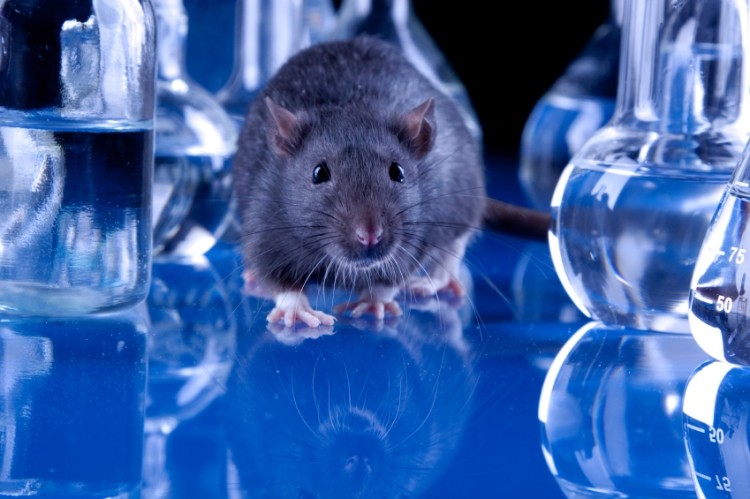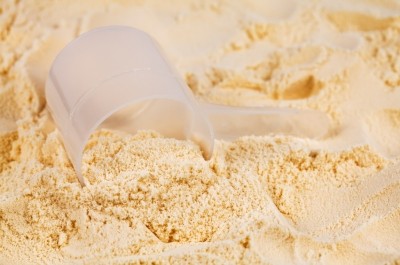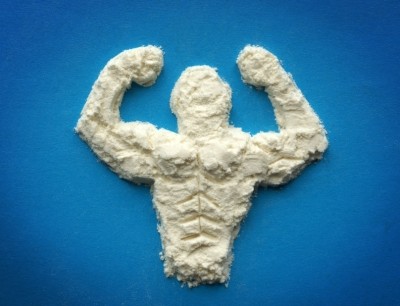Rat study suggests creatine may have more muscle-protective benefits than whey protein

The researchers hypothesized that creatine and whey protein supplementation would restore injury-induced loss of strength by blunting the extent of the initial damage and improving the rate of fiber regeneration.
But at the end of the study, they reported that “creatine supplementation appears to offer an element of [muscle protection] which was not observed following whey protein supplementation.”
The study was published online yesterday in the journal Nutrients. The supplements used in the study were creatine monohydrate and whey protein isolate, both supplied by Colorado-based AST Sports Science, which also funded the study.
“[Our findings] provide important information on the morphological and biochemical mechanisms by which creatine and whey protein are influencing recovery and elucidate the mechanisms for improvements observed in human studies using similar supplementation protocols,” they wrote.
Supplements and doses
Rats were divided into three groups: Creatine, whey protein, or standard chow. The researchers chemically induced muscle damage using bupivacaine on the lateral part of the front leg.
The control rats were fed standard chow for 14 days prior to, and 14 days following the chemically induced damage.
Supplemented rats were given dosages based on studied human doses converted to a rat’s body surface area. Creatine-supplemented rats were fed creatine monohydrate at 2 g per 100 g standard rat chow for five days (loading phase), followed by a maintenance dosage of 0.2 g creatine per 100 g chow for nine days, prior to muscle damage. Following the injury, rats continued to consume the maintenance dosage for seven or 14 days.
Whey protein rats bypassed a loading phase and only consumed the supplement in their chow for a period of 14 days following muscle damage. The dosage was 5 g per kg body weight per day.
To collect data, researchers conducted histological analysis to examine the effects of dietary supplementation on general tissue morphology in both injured and uninjured muscles. They also analyzed muscle protein content in both injured and uninjured muscles
Results
Analyses revealed that creatine supplementation prior to and following a controlled muscle injury was more effective at restoring functional strength compared to whey protein and placebo supplementation.
This conclusion was drawn from the observations that the creatine group experienced reduced damage following the initial damage, greater muscle cross-sectional area of regenerating fibers during the early stages of recovery, and higher levels of muscle contractile protein content during the early stages of recovery.
They also found that muscles of the creatine rats were heavier than muscles of both whey protein and control rats at the end of the study, which they postulated to be due to faster recovery as evidenced by larger cross-sectional areas of the regenerating fibers and higher contractile protein levels.
“In contrast, whey protein-supplemented animals displayed similar weight gain compared to the control animals, and no significant changes in fiber cross-sectional areas and protein levels,” they added.
However, compared to the control rats, whey protein-supplemented rats had more intact muscle fibers following injury (though less than the creatine rats), and less damaged muscle fibers.
Significance
The researchers said that the muscle injury in rats resulted in a greater magnitude of damage, and thus, results should be carefully considered when making comparisons to human models.
But they concluded that “reducing the magnitude of damage following the initial injury to the muscle led to enhanced functional and morphological characteristics during the later stages of muscle recovery following creating supplementation.”
This sort of reduction will not only benefit athletes during intense training phases or recovery, they argued, “but may also have important clinical implications in various myopathies.”
Source: Nutrients
Published online, doi:10.3390/nu10050553
Myoprotective Potential of Creatine Is Greater than Whey Protein after Chemically-Induced Damage in Rat Skeletal Muscle
Authors: Matthew B. Cooke, et al.
















